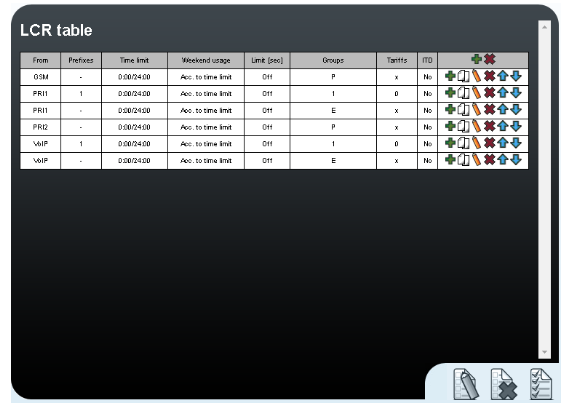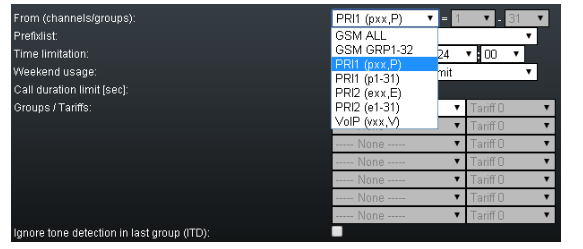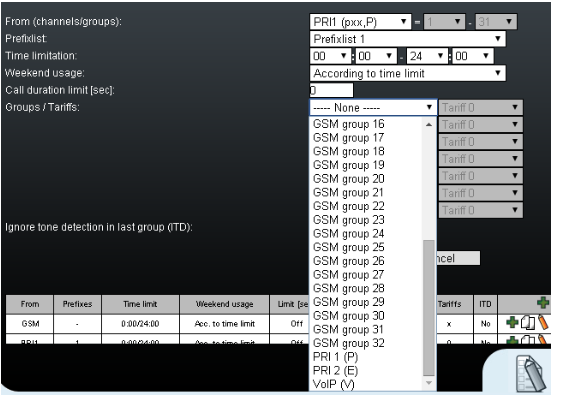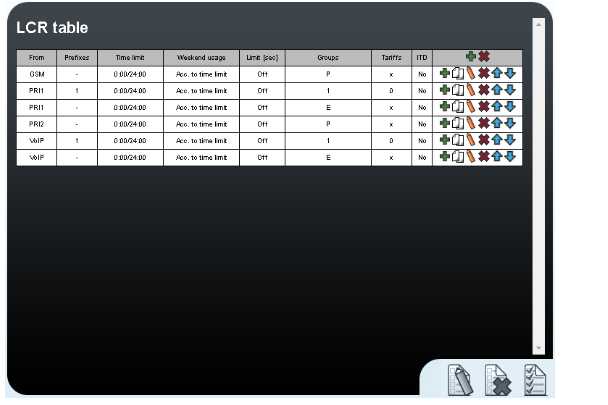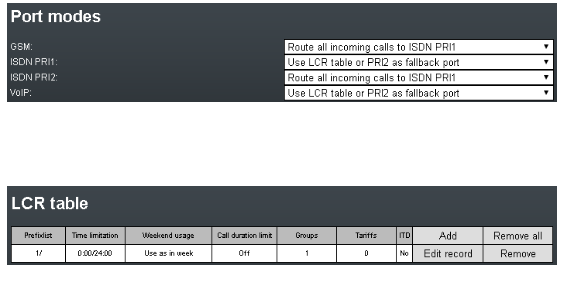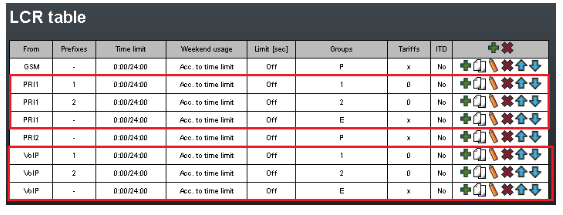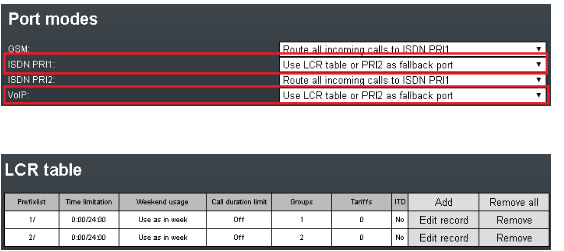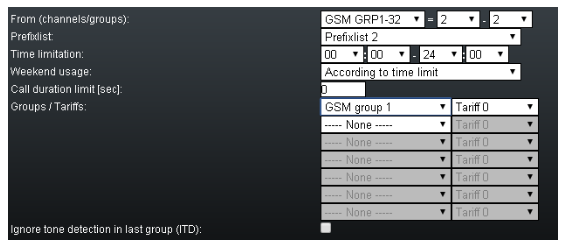Call routing - Changes in call routing in firmware 1.20+ compared to earlier versions on 2N® StarGate and 2N® BlueTower
In firmware 1.20 the way call routing was configured has been changed. In this FAQ you are going to find out what is different from previous firmware versions.
On 2N® StarGate and 2N® BlueTower following changes have been done:
- In Gateway configuration there is no longer option to select port modes, where you were able to select how calls incoming from one port should be routed (basically allowing you to route calls from PRI to GSM or VoIP). This setting has been merged into LCR table offering an easier configuration.
- LCR table has been redone.
New LCR table allows you to have a complete control over where an incoming call (from VoIP, GSM or PRI interface) should be routed to. On pictures bellow you can see examples of differences between the new LCR table and the old one.
1) Explanation of new LCR table
Records in LCR table are read from top to bottom. When a record that matches all conditions is found than the call is going to be sent to outgoing destination specified in that record. Therefore it is important to pay attention to the order in which you have your LCR table records organised!
From (channels/groups) - this parameter specifies where outgoing call originates. In case of Stargate or BlueTower it can be:
- all GSM channels
- specific GSM incoming group (1-32)
- PRI NT interface all channels
- PRI NT interface, specific channel (1-31)
- PRI TE interface, all channels
- PRI TE interface, specific channel (1-31)
- VoIP
Prefix list - you must specify either one prefixlist, that the outgoing call number must match, or you can select option All prefixlists, where any outgoing call number that matches at least one prefixlist, will be routed by channel specified under Groups/Tariffs
Groups/Tariffs - this parameter specifies if outgoing call should go through a specific GSM outgoing group (1-32), VoIP or PRI interface (NT/TE)
This way you have a better control over how outgoing and incoming calls are handled and routed. Plus it is possible to route incoming calls from GSM back to GSM which was not possible in older firmware version.
2) Default LCR table settings
Firmware 1.20 | Firmware 1.19 and older |
|---|---|
In default there are 6 records which match the default setting of Port modes and LCR table from firmware 1.19 and older | You need to setup both Port modes and LCR table. |
3) Routing outgoing calls from PRI NT interface and VoIP based on prefix lists (2 outgoing GSM groups with 2 prefix lists), incoming calls are left in default
Firmware 1.20 | Firmware 1.19 and older |
|---|---|
Calls coming from PRI NT interface (lines 2-4) are routed based on prefix lists.
Calls coming from VoIP (lines 6-8) are routed based on prefix lists:
| First you need to change Port modes to match your desired scenario (top picture above) and than you need to create 2 rules in your LCR table to match your scenario. |
4) Incoming call from GSM group 2 (matching prefix list 2) will be routed back to GSM through GSM outgoing group 1. Every other incoming call from GSM will be sent to PRI TE interface. Everything else is left in default.
Firmware 1.20 | Firmware 1.19 and older |
|---|---|
| Sending incoming calls from GSM back to GSM was not possible | |
| On picture above you can see how to set a scenario where all incoming calls from GSM incoming group 2 should be sent back to GSM through GSM outgoing group 1 (if dialled number will match Prefix list 2) | Sending incoming calls from GSM back to GSM was not possible |
| Sending incoming calls from GSM back to GSM was not possible | |
On the picture above you can see how to set described scenario. All calls from GSM incoming group 2 (matching prefix list 2) are sent back to GSM. | Sending incoming calls from GSM back to GSM was not possible |

